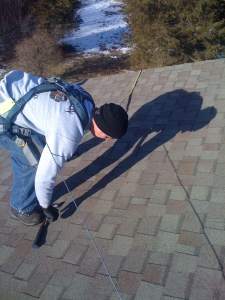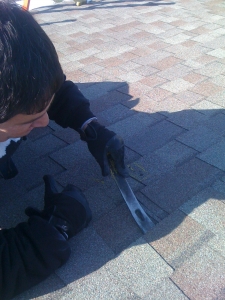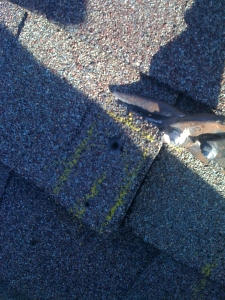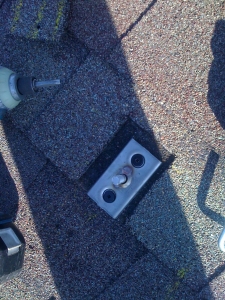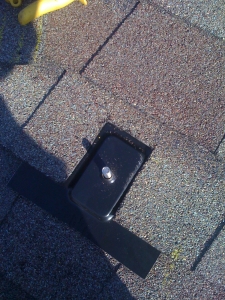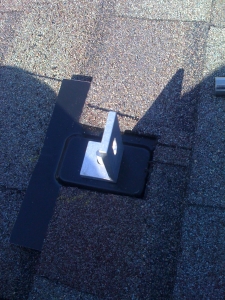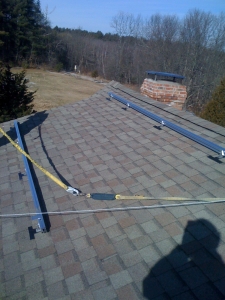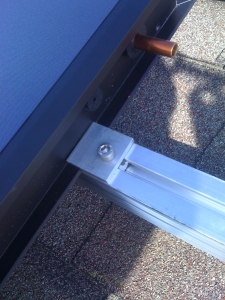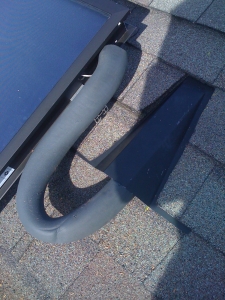You’ve held a solar thermal workshop and generated some leads, prepared a solid sales presentation, sold your first job, designed the system and now you’re curious about the installation process.
While the installation process may not take a long time compared to other steps, one day for an experience crew and two or three for a normal crew, it is extremely critical for the profitability of your company in two ways. First, it’s a critical component for generating referrals, how much does the client enjoy your crew. Second for cost implications, is the system installed correctly so do you don’t have any call backs and is the homeowner does not call you back because she doesn’t understand how the system works?
This photo guide will focus on the second implication by making sure the system is installed correctly. Here is the step by step guide of how solar hot water panels are installed.
Step 1: Put up the ladder. Duh! You have to get on the roof.
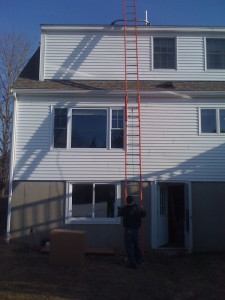
Step 2: Trace out the layout of the racks
Step 3:Loosen the shingles where the base plates will go
Step 4: Cut the single away from where the base plate will sit. The base plate holds the rack that holds the panel.
Step 5:Put Caulk on the holes that the base plate will be drilled into.
Step 6: Screw on the base plate.
Step 7: Put flashing over the plate and under the shingles. This stops water from coming in. This is also why we loosened up the singles in step 3.
Step 8: Bolt the L clamp to the base plate. The rail will be attached to the L clamp.
Step 9:Repeat the process until you have all the L feet installed on all rows that you mapped out in step 1.
Step 10:Put in rails loosely. Do not tighten them until they’re square.
Step 11: Bolts rails to L clamps and insert bottom feet that will hold the bottom lip of the panels. 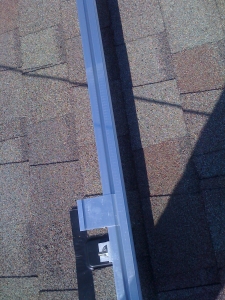
Step 12: Bring up panels on the lift latter
Step 13: Put panel on rails and attach
Up close of the attachment
Step 14: Repeat Process
Step 15: Install thermal censor and intakes/outputs from the panel through the roof
Step 16. The line-set (the intakes and outakes of the panels) is then snaked to the existing hot water system typically in the basement. The plumber will interconnect the system, pressure test it, fill it with glycol and then you’ll turn on the monitoring system that will begin running the pump and the system is operational.
Almost every part of the solar thermal installation is critical to performance and durability.
- L-Foot Attachment. Each L foot must be firmly mounted to rafters for structural support, especially wind and snow loading.
- Square Rail. For aesthetic purposes its key that the rail is square. Also, many solar thermal manufacturers pre-measure each rail so they may not fit perfectly with the panels you’ve specified if its not square. . It’s likely that if the rail is not square the panels will not fit.
- Panel Connection. The connetion between panels is a must for pressurized systems. If the connection is not 100% perfect fluid will leak from the system and it will begin to perform poorly in a short amonut of time. Good plumbers will pressure test the system with air before they fill it with glycol
- Lineset Penetration. The linset penetration is the point where most leaks will occur so its critical that the penetrations through the roof and the membrane used will keep water out. Never used caulk as the primary barrier between the outside and conditioned space.
Hope you enjoyed it! If you have any questions, please let me know.


